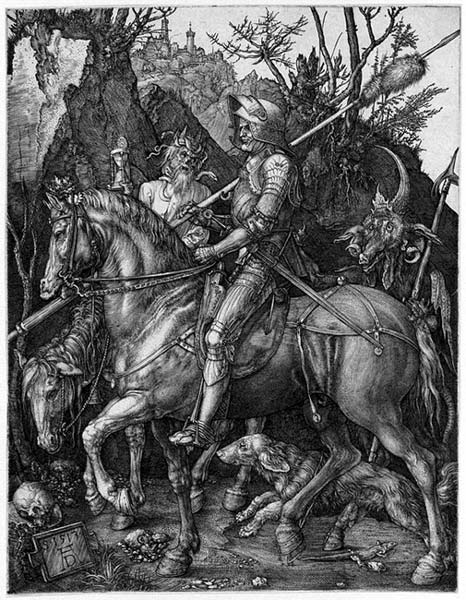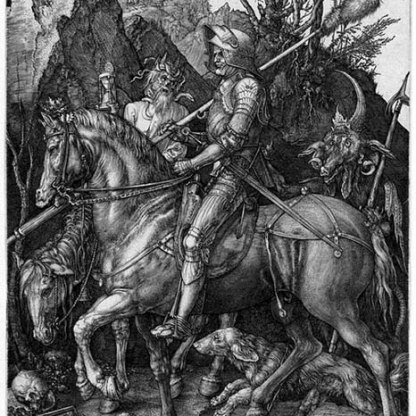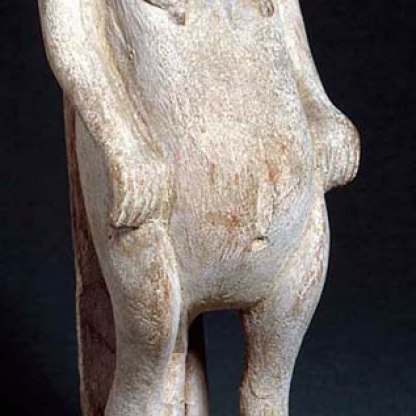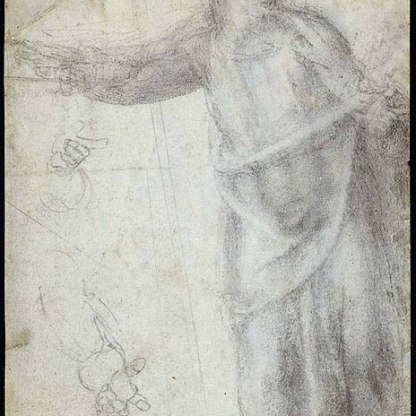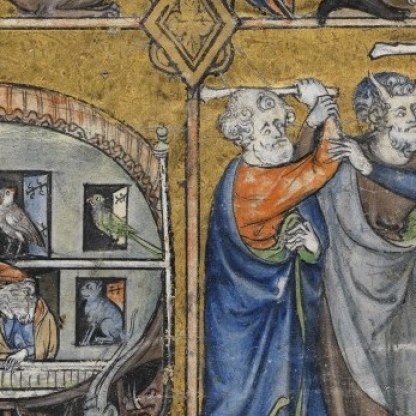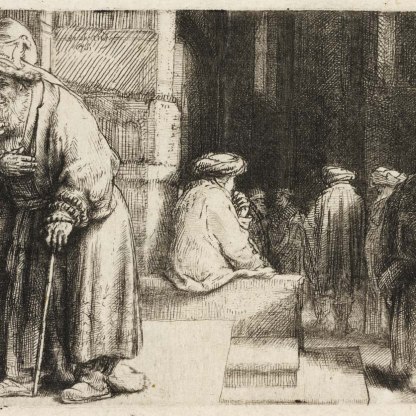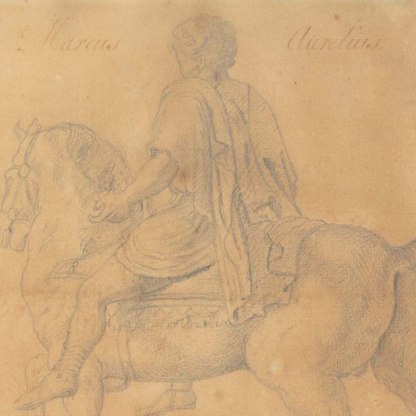German Knights
Dürer’s home town of Nuremberg was one of the great centres of armour manufacture in the sixteenth century, and he himself probably designed suits of plate mail. That worn by his Knight is very similar to the German panoply in the Fitzwilliam, right, dated to around 1520.
The knightly class in Germany was undergoing a crisis during Dürer’s lifetime. There was an intense rivalry between the old mercenary chevaliers and the powerful merchants who now held the balance of power in the cities. In 1522, the knights found themselves at war with Germany’s princes, a conflict that finally put an end to their waning power.
Two of Germany's most famous knights fought in this last struggle.
Franz von Sickingen (1481–1523) died from wounds that he suffered at the siege of the castle of Landstuhl. Although Dürer’s print is universally known today as The Knight, Death and the Devil, and Dürer himself referred to it in his correspondence simply as 'The Rider', the eighteenth-century German critic Friedrich Schlegel entitled it 'Sickingen Riding through the Forest'.
Von Sickingen was the ally of another Knight, Ulrich von Hutten (1488–1523), who, having survived the Knights’ War, died of syphilis in Switzerland. A satirist and man of letters as well as a soldier, he had once said that he still found pleasure in life, though pestilence were creeping up behind his horse and death stood before his eyes, an accurate description of the plight of Dürer’s Knight.
In the nineteenth century, a less heroic interpetation of the print was put forward. In this the rider is a robber knight, and Death and the Devil are those who are about to triumph, as they lurk in readiness to capture his sinful soul. Underemployed mercenaries were known to menace the roads of Germany in the early sixteenth century. Indeed, in 1506, Dürer’s own salesman was held up by one of these redundant crusaders and stripped of the print portfolio that he was carrying for his employer.
Other highlight objects you might like
Other pathways and stories you might like
Sign up to our emails
Be the first to hear about our news, exhibitions, events and more…
